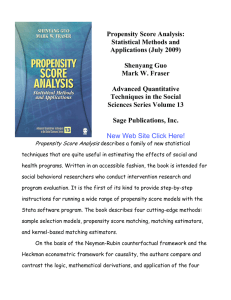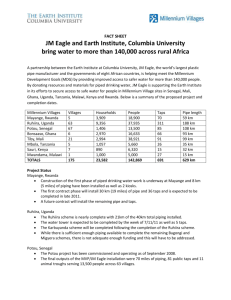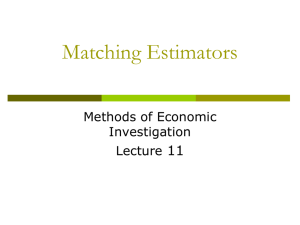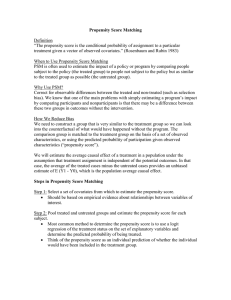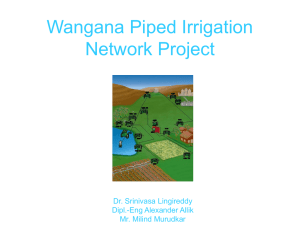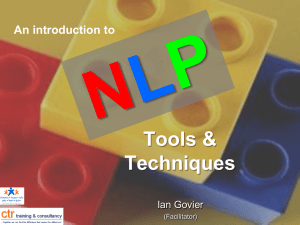LT8: Matching - Samuel marden
advertisement
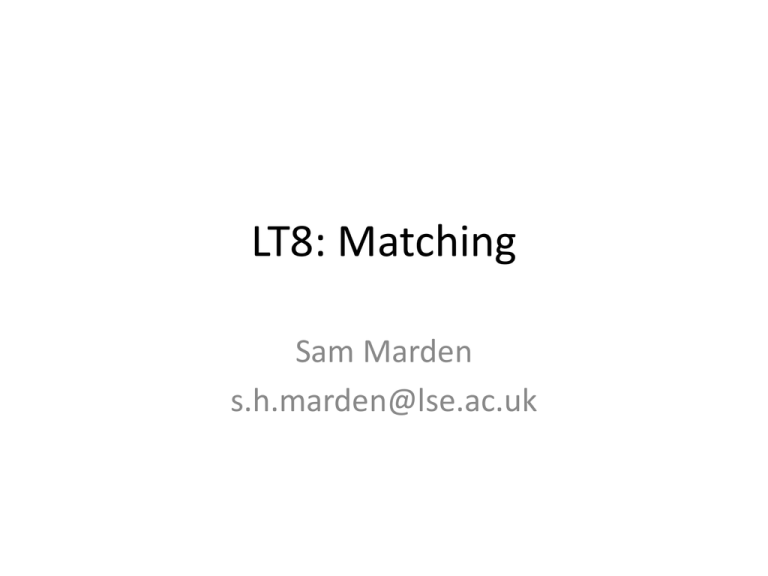
LT8: Matching Sam Marden s.h.marden@lse.ac.uk Introduction Describe the intuition behind matching estimators. Be concise. Suppose you have a sample of 100,000 prospective voters, with data on age, gender, party affiliation, county of residence, and whether or not an individual voted in the last elections. Ten thousand of these individuals were reached by telephone and heard a short message from a non-partisan agency regarding the importance of voting. The aim of the message was to improve voter turn out. Explain in no more than three sentences how one would use a matching estimator to estimate the effect of the calls. Note, you do not need to provide technical details (that comes next week), but a clear and intuitive explanation of how you would construct the matching estimator. What do we expect the effect of piped water to be? Is it likely to be heterogenous? What do we expect the effect of piped water to be? Piped water Fewer Pathogens Less Disease Is it likely to be heterogenous with income? Maybe, Piped Water ≠ Clean Water • interacts with other inputs e.g. storage of water, access to medical facilities etc, so increases/decreases the MB of these inputs • If other inputs have an income elasticity ≠ 0 then different effects on rich and poor Picture of a water pipe and child for no reason Do the propensity scores look plausible? Now we’ve done our propensity regression what do JR do with them? Now we’ve done our propensity regression what do JR do with them? 1. Compute the fitted values: this gives the probability of being in the treatment group conditional on observables: p(xi)=Prob(T=1|xi) 2. For each observation in the treatment group find the five nearest neighbours i.e. the ones that minimise |p(xi)-p(xj)| 3. Throw out observations in the treatment group which don’t have at least 5 neighbours that have with conditional treatment probabilities within 3.2p.p of the treated observation 4. For those that remain. Take an average of the five nearest neighbours and call this the counterfactual. What does figure 1 tell us? What does figure 1 tell us? • Treated individuals have higher propensity scores. • Common support across much of the distribution • Not too many control observations with very high scores. • Consequently 650 treated observations dropped. What are the key results of the paper? How different are the Matching Results from the OLS estimates? They are buried in the text but they are very similar when run on sample of common support ASPSM. We don’t get the other results. • Not really surprising – ‘Same’ identification assumption – But PSM allows for non-linear relationship between controls and y – If the relationship between controls and y is linear then results should be the same but less precisely estimated – Less precision comes partly from weighting How different are the Matching Results from the OLS estimates? Which un-observables may be biasing the results? Which un-observables may be biasing the results? • We need to worry about unobservables that are correlated with diarrhea, corellated with the presence of a water pipe, and not perfectly correlated with other observables • This is the same condition as for OLS • E.g. preferences for hygiene reduce the incidence of diarrhea and would make people want to live near a water pipe. What are the key policy implications for this paper? What are the key policy implications for this paper? • Water pipes are sweet • Poor people are dirty may need help maximising the benefits of cleaner water and to be provided with other complementary inputs • There may be complementarities between knowledge, other investments and access to piped water Describe an experiment that you would like to run.
